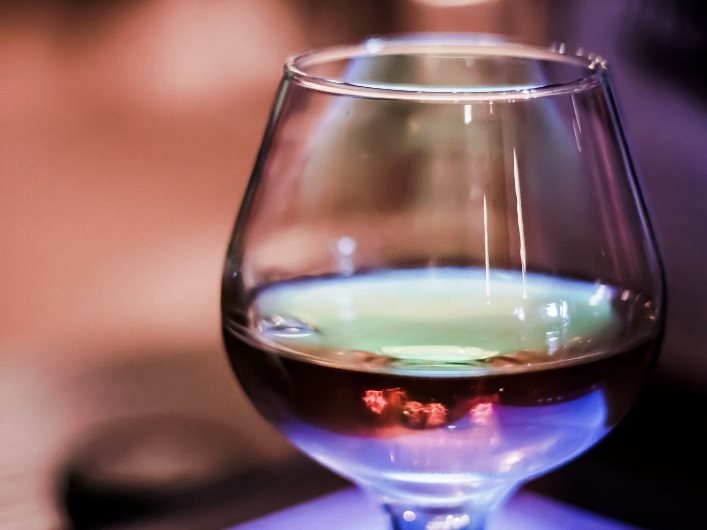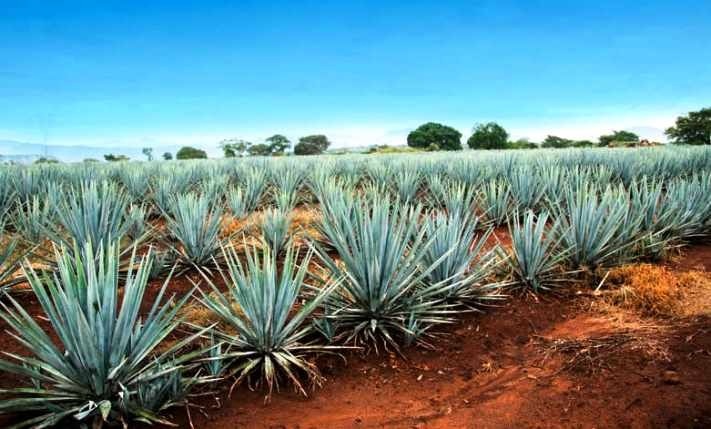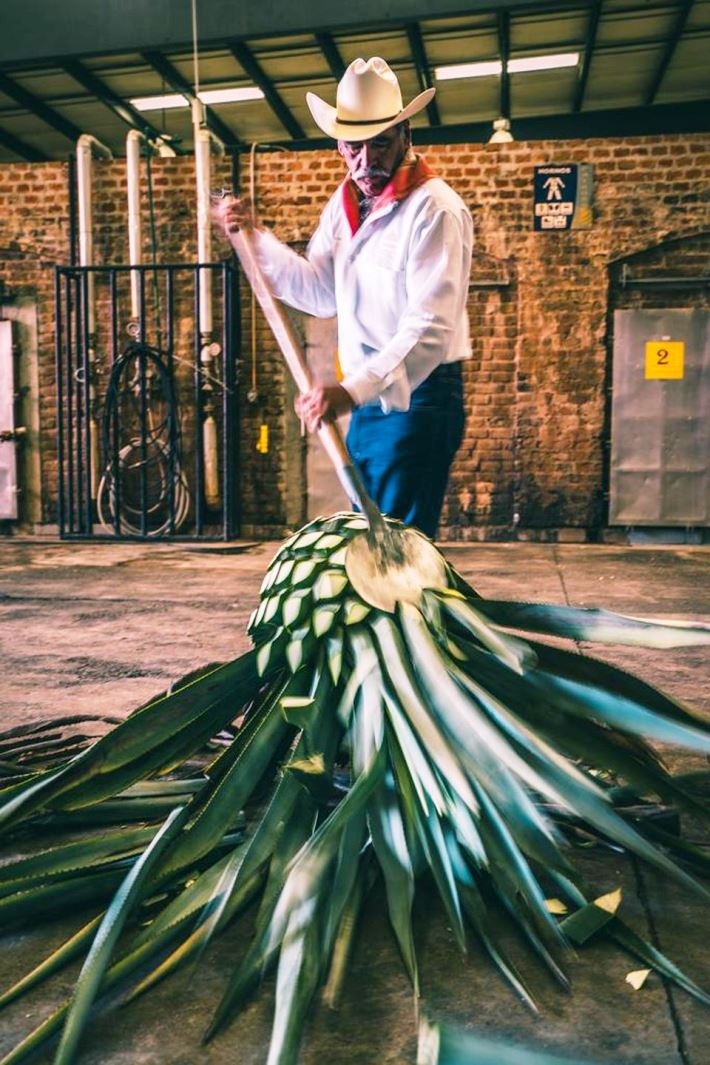Tequila and a very Meaningful Conversation with Michael

Tequila has never been a good friend to me and to be honest with you I have never really understood the drink, only to say occasionally an ice-cool margarita can be very inviting especially in hot weather.
If you’re anything like me, early memories of tequila drinking bring back foggy images of high school house parties a la Tom Cruise in “Risky Business.” Some of you might remember staring at the lifeless worm floating sadly on the bottom of a bottle, and wondered, who would drink that? Many of you still wince and cry, “It burns!”
On a recent visit to Oregon, my business partner and good friend Mark Herbert, decided to introduce me to Michael Bailey, who frankly is an expert in tequila. We arrived at Michael’s house, deep into the Mohawk Valley, where he showed us around his vast tequila collections, where this tequila cannot be purchased, my curiosity did get the better of me, there was no Patron tequila in his collection, not even Patron ultra-premium, no salt and no lime, just tequila.
Also, tequila does not have a worm in its bottle. The worm, or guano, is associated with mezcal. In the 1940s, a few brands started a marketing ploy attributing aphrodisiac and magical qualities to the worm and the person shooting it. As you can probably guess, ingesting the worm has no effect on desire, nor are fine bottles of either tequila or mezcal sold with a worm in it.
The word tequila comes from the Nahuatl (Aztec) language and translates to “the place where plants are harvested,” or possibly “the place where a lot of work is done,” according to Jose Maria Muria in his book, “A Drink Named Tequila.” And that pretty much sums up the sentiment behind tequila: A plant, a place and the people who make it, Michael believes that the word Tequila has a translation of ‘The Stone That Cuts’.

Michael started to discuss the subject of Hollywood actor George Clooney and his recent investment into tequila, ‘when George Clooney and Rande Gerber’s tequila company, Casamigos, sold for $1 billion last year, it begged the question: that there really so much money in tequila.
In the Guadalajaran skies, desert heat, verdant blue-green leaves, distilled down via an ancient recipe into a crystal-clear, power-punch of a spirit. The roots of our most beloved, hangover-inducing inebriant go all the way back to the 13th century.
Agave was an important part of life in pre-Hispanic Mexico: the dense fibres were perfect for mats, ropes, possibly wigs, but people also had another use for the plant: they loved to booze around with agave juice.
Pulque was their favourite drink, a fermented, milky coloured, yeasty agave juice concoction that pre-Aztec civilisations had the good sense to distil. North American fascination with tequila began during prohibition, and surfaced again in the Second World War when European spirits were hard to come by.
Agave – The Cultivation of the Tequila Tradition
The History of Tequila
The town of Tequila was founded in 1656 in what is now the Mexican state of Jalisco. It didn’t take long for tequila to be produced throughout the country and Jose Cuervo was the first to commercialize the product. The late 1800s saw the first exports to the United States and the following Mexican Revolution and World Wars added to the international popularity of tequila.
Tequila can only be made within particular regions of certain Mexican states. They include 124 municipalities of Jalisco (including the town of Tequila and the majority of modern tequila production), 8 municipalities in Nayarit, 7 municipalities in Guanajuato, 30 municipalities in Michoacan, and 11 municipalities in Tamaulipas.

Mark and I were hugely curious, sipping gently on our first Margarita, ‘so Michael how is tequila made?’
Good question guys, tequila is made by distilling the fermented juices of the Weber blue agave plant with water. The agave is a member of the lily family and it looks like a giant aloe vera plant with spiked barbs on the tips. After seven to ten years of growth, the agave plant is ready to be harvested and used in the production of tequila.
Underground, the plant produces a large bulb called a piña, which looks similar to a white pineapple. The agave’s spiky leaves are removed and the piñas are quartered and slowly baked in steam or brick ovens until all the starches are converted to sugars. The baked agave is crushed in order to extract the plant’s sweet juices, which are then fermented.
100% Agave vs. Mixto: According to Mexican law, all tequila must contain at least 51 percent Weber blue agave (Agave tequilana). Really good tequila, like the one you are drinking, is 100% Weber blue agave and will be clearly marked that way on the bottle. The law also requires them to be produced, bottled, and inspected in Mexico.
Tequila that is not 100% agave is called mixto (mixed) because it is blended with sugar and water during distillation. Mixto tequilas can be produced outside of Mexico. Until around the turn of the 21st century, mixtos were the main tequilas produced. Today, the majority of the tequila you will find is “Tequila 100% de Agave.”
Tequila is distilled in either pot or column stills until it reaches around 110 proof. The result is a clear spirit with a significant amount of congeners. These congeners are by-products of alcohol fermentation that are often thought of as impurities which may lead to more severe hangovers.
Some tequileros (tequila producers) re-distil the tequila to produce a cleaner liquor. Before bottling, the distillate is cut with water to obtain the bottling strength, which typically is around 80 proof, or 40 percent alcohol by volume (ABV).
Some tequilas are clear and are called blanco or silver tequila. Others take on a brown color due to one of two possible sources. Gold tequilas often get their colour from the addition of caramel or other additives. Reposado and añejo tequilas obtain their golden-brown colour from barrel ageing. Some tequilas are flavoured with small amounts of sherry, prune concentrate, and coconut, though these are not “true” tequilas, but “tequila products.”

The recipe for tequila is startlingly simple. All you need is agave, yeast and water, a few years for your crops to mature, oh, and a donkey or two. Jimadores (agave farmers) harvest the piña (heart) from the centre of the huge Weber blue agave at the perfect point in its life cycle (by all accounts, a rare, almost esoteric skill passed down through generations).
The piña is chopped up and gently steam-baked in a brick oven for a few days (or in an industrial pressure cooker for shorter cook time) and – slowly – the heart softens as the starch turns to sugar. The cooked piña is shredded like pulled pork, then crushed (often on a stone wheel, sometimes by donkeys) to extract the aguamiel, or juice, which is poured into heated wooden tanks.
The nectar ferments for a week or two – the yeast found naturally in the leaves of the agave plant is traditionally used to speed up the process – and then it’s distilled two to three times, water is added and it’s aged in wooden tanks or vats.
Each producer’s distillation process, ageing time and vessel give the tequila its unique flavour notes and aroma. It takes between 14 and 21 days to create the perfect white, clear-as-crystal tequila, while ageing the spirit for two months creates a pale gold tequila, drawing in some of the flavours and hues of the wood. Ageing the spirit from two to 364 days creates reposado (rested) tequila, and one year and beyond is known as anejo or aged tequila (and it’s delicious).
Before I make you both another Margarita, we are going to try all the 5 types (Tipos) of tequila, so you can fully understand the variables in taste, colour and quality of tequila, they are:
Blanco, Silver, or White Tequila (Tipo 1): Blanco tequila is a clear spirit that can be either 100% agave or mixto. These tequilas are “aged” — more like “rested” — no more than 60 days in stainless steel tanks, if they are aged at all. The unaged blancos give the drinker the rawest taste of agave available and have a notable earthy flavor that is distinctly tequila. If you have not tasted a blanco, then you are missing out on the pure taste of the agave plant.
Silver tequila is primarily used for mixing and is perfect for almost any tequila cocktail and often smoother than the gold tequilas shots. If you are looking for a quality, affordable, all-around tequila to keep in stock, a blanco is your best option.
Joven or Gold Tequila (Tipo 2): Joven (young) or oro (gold) tequilas are the ones that many older drinkers are familiar with, particularly if you spent any time doing tequila shots in the last few decades of the 20th century. Gold tequilas are responsible for many bad tequila experiences and were the most widely distributed in the U.S. during that time.
These are often unaged tequilas that are typically mixtos and have been colored and flavored with caramel, oak extract, glycerin, syrup, and other additives. While many gold tequilas leave something to be desired in comparison to the other classes, there are now a few decent bottlings available. If you are going to drink a gold tequila, stick to heavily flavored cocktails or (if you must) shots.
Reposado Tequila (Tipo 3): Reposado (rested) tequilas are aged in wood casks for a minimum of two months and many are aged from three to nine months. The barrels mellow the flavors of a pure blanco and impart a soft oak flavor to the agave as well as giving the tequila its light straw color. It has become popular for distilleries to age their tequilas in used bourbon barrels, which adds another dimension to the finished taste.
A little more expensive than blancos, reposado tequilas are the middle ground of the three main types found that are now pretty standard in a brand’s tequila line-up. They are versatile enough to be used in a great number of tequila cocktails, particularly those that have lighter flavors like the margarita or tequini. Reposados also make great sipping tequila.
Añejo Tequila (Tipo 4): Añejo tequila is “old” tequila. These tequilas are aged, often in white, French oak or used bourbon barrels for a minimum of one year to produce a dark, very robust spirit. Most añejos are aged between 18 months and three years while some of the best can spend up to four years in barrels. Many tequileros believe that aging longer than four years ruins the earthy flavour tones of the spirit.
Añejo tequilas tend to be very smooth with a nice balance of agave and oak. You will often find butterscotch and caramel undertones, which makes these perfect for sipping straight (chilled if you like) or for those really special cocktails.
You can liken an añejo to a high end brandy or whisky. Try these tequilas in a snifter to get a real sense of their aromas and flavours. As might be expected, añejo tequilas are some of the most expensive on the market, though there are many reasonably priced options available.
Extra-Añejo Tequila (Tipo 5): The change in the tequila market of recent years has led to the creation of a fifth type of tequila, which is labeled extra-añejo or muy añejo (extra-old).
These tequilas spend over four years in barrels and have a profile that rivals some of the oldest whisky you can find. Logically, the price of these tequilas reflects their extra time in the barrel and these are ones that you will want to save for straight sipping, enjoying every second of the experience.

Mark and I finished our last tequila with Michael, thanked him for a wonderful afternoon of tequila, home-made Margarita’s and phenomenal learnings, thankfully our taxi was on hand to drive us home.
So, what did I learn, one hundred percent agave tequila is made for sipping and savoring from a snifter, like a good scotch. No lime or salt is necessary to mask the flavor. (The more aged a tequila is, the more mellow the flavor, so opt for darker-colored añejo or reposado.)
After every sip or two you can dip a wedge of lime into a little salt and suck on it if you want to, but if you’re drinking mezcal skip the lime and opt for an orange slice instead.
If you find yourself at a great tequila bar that really means business, you can see if they have any sangrita, which is the only real “chaser” that Mexicans drink with tequila. It’s a sweet and spicy mixture of citrus juices, hot sauce, and sometimes tomato juice and/or Worcestershire.
It’s served in a small glass alongside the tequila, and when sipped in between sips of tequila, it cleanses the palate and highlights the tequila’s peppery and citrusy taste.
And if you’re looking to drink tequila in a cocktail, do as the Mexicans do and mix it with grapefruit soda (like Fresca) to make a refreshing Paloma.
Michael’s Margarita was super easy, delicious and possibly the best Margarita, I have EVER tasted, one part juice made from fresh oranges, one part juice made from fresh lemons, ice, Michael’s special tequila, ice and for taste coriander – AMAZING!
Statistics show that the United States is the largest consumer of tequila. In addition, the US demand for tequila is increasing year by year. Spain and Chinese demand for tequila are increasing at a very high rate.
Tequila has very strict requirements for raw materials. A mature blue agave requires a minimum of eight years, which limits the total production of tequila.
In 2017, the global tequila market size was 4.660 million US$ and is forecast to 6.360 million US in 2025, growing at a CAGR of 4.0% from 2018
Michael believes that tequila is a fine drink that enchants us all from the very beginning. It needs to have that certain ’WOW’ effect. It was very hard work, but at the end of the day there are many tequilas with an incredibly smooth finish. Like alchemists, you need to search for a tequila that when first sipped you will experience a magic moment.
As Rainbow Rowell, an American Author once said:
“Drinking tequila is more about the journey than the destination.”
Articles from Geoff Hudson-Searle
View blog
This week’s #thoughtleadership article we focus on The IBEM Executive Thought Leadership Forum and t ...

It was with real Joy that we celebrated the launch of Scars to Stars volume 3. · Scars to Stars™ is ...

I really enjoy meeting up with my colleagues and friends, especially when we engage in ‘Meaningful C ...
Related professionals
You may be interested in these jobs
-
Public Relations Manager
5 days ago
EMR | Specialist in Marketing Recruitment London, United KingdomJob Description · PR Manager · London · Up to £40,000 · I am working with a renowned multi-asset investment business who specialize in luxury goods and collectibles. They are a fast growing business and are looking for a PR Manager to join their team based in London. · As PR Mana ...
-

Religious Education Teacher
5 days ago
Wayman Group London, United Kingdom Full timeWayman Education is looking for a Religious Education Teacher to work within a great school based in Southwark. · *We are seeking a dedicated Religious Education Teacher to join our esteemed institution on a full-time basis. · *An exciting opportunity awaits at our prestigious sc ...
-
Cover Supervisors Needed Asap
1 day ago
Qualiteach Ltd Wandsworth, Greater London, United KingdomCover Supervisor - Wandsworth -ASAP Start - £120 to £180 per day · * Cover Supervisor - ASAP start · * Cover Supervisor - Must have experience teaching in Secondary · Do you have experience within a Secondary School? · Can you start ASAP? · Qualiteach is seeking a Cover Superviso ...


Comments
Geoff Hudson-Searle
4 years ago #2
Thanks Jerry Fletcher Oregon is always a great visit! However, there were times....I felt I may of been in the Mexican mountains :-) All is well thank you, in production and preparations of publication of the new book 'Purposeful Discussions' so added with my day to day work - super busy. Stay well My Friend!
Jerry Fletcher
4 years ago #1